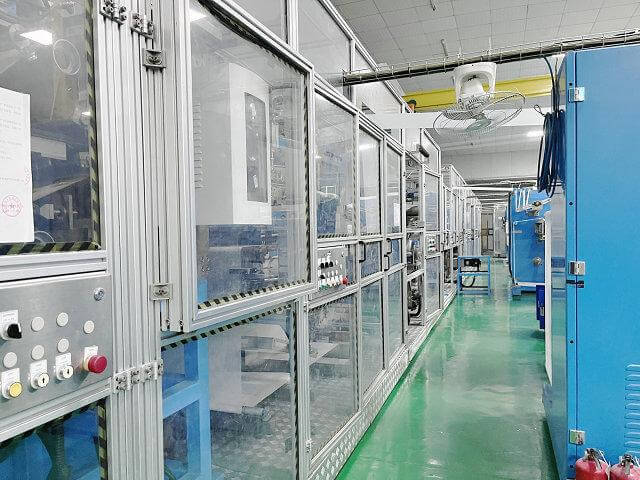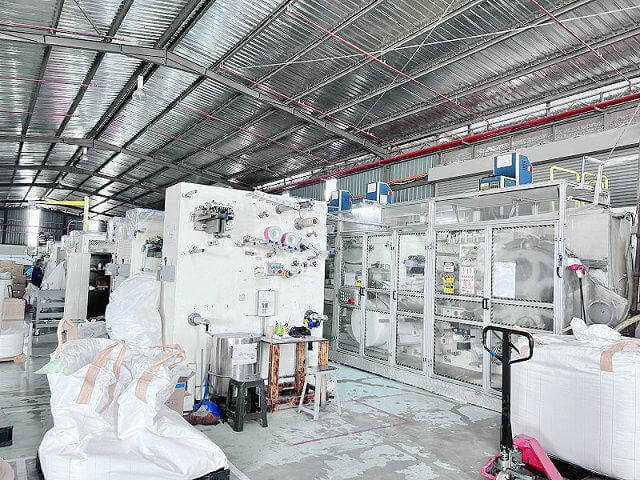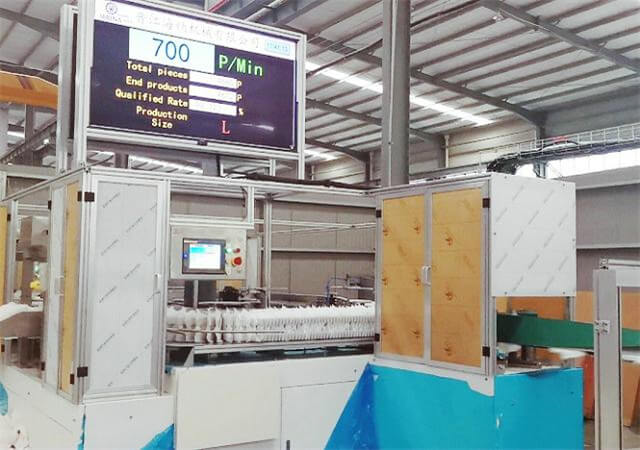Author:Haina Machinery Factory FROM:Diaper Machinery Manufacturer TIME:2023-11-17
Installation Instructions for Sanitary Napkin Production Line

The installation of a sanitary napkin production line is a crucial step in setting up a manufacturing facility for the production of sanitary napkins. This guide provides detailed instructions on how to install the production line efficiently and effectively. By following these instructions, you can ensure that the installation process is smooth and successful.

Prior to the installation, it is essential to prepare the site where the production line will be installed. Begin by thoroughly cleaning the area and removing any debris or obstacles. Ensure that the site has adequate space and ventilation for the machinery. Additionally, make sure that all necessary utilities, such as electricity and water, are readily available.

Once the installation site is prepared, unpack the equipment and carefully inspect each component. Verify that all parts are present and in good condition. Any damaged or missing parts should be reported to the supplier immediately for replacement. It is crucial to ensure that all equipment is in proper working order before proceeding with the installation.
Begin the assembly process by referring to the manufacturer's instructions and diagrams. Carefully assemble each machine component according to the provided guidelines. Pay close attention to the alignment and connection of the various parts. It is important to follow the recommended sequence of assembly to ensure the proper functioning of the production line.
After assembling the machinery, connect the required utilities, such as electricity, water, and air supply. Follow the electrical wiring diagram provided by the manufacturer to correctly connect the equipment to the power source. Ensure that all connections are secure and properly grounded for safety purposes. Similarly, connect the water and air supply lines according to the specified instructions.
Once the machinery is assembled and the utilities are connected, it is time to perform testing and calibration. Start by conducting a thorough inspection of all connections and settings. Verify that all sensors, actuators, and control systems are functioning correctly. Test the production line by running a few trial batches to ensure that the output meets the required specifications. Calibrate any necessary parameters to optimize the production process.
After the installation and initial testing, it is essential to provide training to the operators and maintenance staff. Conduct comprehensive training sessions to familiarize them with the equipment's operation, maintenance procedures, and troubleshooting techniques. Additionally, create detailed documentation that includes operating manuals, maintenance schedules, and troubleshooting guides. This documentation will serve as a valuable resource for future reference.
Prior to commissioning the production line, perform a final inspection to ensure compliance with all safety and regulatory requirements. Check if all safety guards, emergency stop buttons, and warning signs are in place and functioning correctly. Verify that the production line meets all applicable quality standards. Address any identified issues or non-compliance before proceeding with full-scale production.
Once all necessary preparations are complete, commission the sanitary napkin production line for regular operation. Monitor the initial production runs closely to identify any potential issues or optimization opportunities. Fine-tune the settings as needed and make any necessary adjustments. Finally, hand over the production line to the operations team, ensuring that they are fully equipped and prepared to maintain and maximize its efficiency.
Proper installation of a sanitary napkin production line is vital for a successful manufacturing facility. By following the instructions provided in this guide, you can achieve a smooth and efficient installation process. Remember to pay attention to each step, from site preparation to commissioning, to ensure the production line operates optimally and meets all quality standards.
